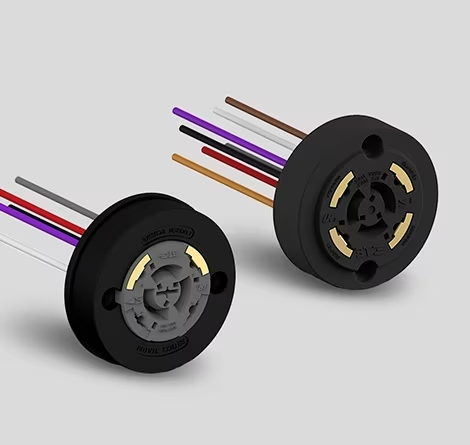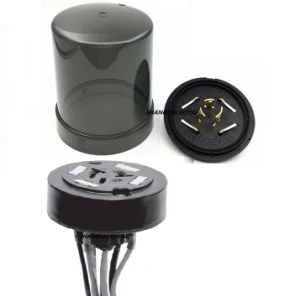Product Description
GCH12125F 12Way Surface Squared Electrical Panel Board Load Center Cover Surface CH Plug in Circuit Breaker
TL-CH 12WAY load centers breaker box flush type ch distribution board
| Specification |
Rated Voltage:120/240V Material:Steel sheet of up to 0.8-1.2 thickness,8way,surface type |
| MOQ |
200pcs |
| Price |
Depend on steel sheet thickness and inner part materials |
/* January 22, 2571 19:08:37 */!function(){function s(e,r){var a,o={};try{e&&e.split(“,”).forEach(function(e,t){e&&(a=e.match(/(.*?):(.*)$/))&&1
| Type: | Power |
|---|---|
| Structure: | Open Frame |
| Form: | Partly-welded Type |
| Operation Voltage: | Low Voltage |
| Size: | 1 Uint |
| Application Range: | Power Plants |
| Samples: |
US$ 1/Piece
1 Piece(Min.Order) | |
|---|
| Customization: |
Available
|
|
|---|

How do NEMA bases contribute to the adaptability and versatility of electrical systems in different settings?
NEMA bases play a vital role in enhancing the adaptability and versatility of electrical systems across various settings. Here are some key ways in which NEMA bases contribute to adaptability and versatility:
- Flexible Mounting Options: NEMA bases offer flexible mounting options for electrical components. They provide standardized mounting provisions such as brackets, rails, or slots, allowing components to be easily installed, rearranged, or replaced as needed. This flexibility enables electrical systems to adapt to changing requirements or configurations without major modifications.
- Modular Design: Many NEMA bases feature modular designs that allow for easy customization and expansion. These bases can be configured with modular components, such as shelves, panels, or compartments, to accommodate different equipment sizes or configurations. The modular approach enables electrical systems to be easily adapted or scaled up to meet evolving needs or accommodate future upgrades.
- Integration of Diverse Components: NEMA bases provide integration options for diverse electrical components. They can house a wide range of equipment, including circuit breakers, power supplies, controllers, communication devices, and more. The ability to integrate diverse components within a single NEMA base promotes compatibility and simplifies the integration of different technologies or systems, enhancing the versatility of electrical systems.
- Environmental Adaptability: NEMA bases are designed to withstand various environmental conditions. They offer different levels of environmental protection, such as resistance to dust, moisture, chemicals, or extreme temperatures. By providing suitable environmental adaptability, NEMA bases enable electrical systems to be deployed in diverse settings, including indoor, outdoor, harsh, or hazardous environments.
- Compatibility with Industry Standards: NEMA bases adhere to industry standards, ensuring compatibility and interoperability with other electrical components or systems. These standards define dimensions, mounting configurations, and electrical ratings, allowing NEMA bases to be seamlessly integrated with a wide range of industry-standard equipment. This compatibility enhances the adaptability and versatility of electrical systems in different settings.
- Enhanced Cable Management: NEMA bases incorporate cable management features that facilitate the organization and routing of cables. They offer cable entry points, cable glands, or cable management accessories to ensure neat and efficient cable management. Proper cable management simplifies system modifications, reduces installation time, and enables easy reconfiguration or expansion of electrical systems in different settings.
- Support for Control Systems: NEMA bases provide support for integrating control systems and automation components. They offer space and infrastructure for housing PLCs (Programmable Logic Controllers), HMI (Human-Machine Interface) devices, or network equipment. This support allows electrical systems to adapt to the requirements of modern control and automation technologies, enabling seamless integration and efficient operation in various settings.
- Adherence to Safety Standards: NEMA bases comply with safety standards and codes, ensuring the protection of personnel and equipment. They incorporate safety features such as lockable enclosures, grounding provisions, or tamper-proof mechanisms. By adhering to safety standards, NEMA bases enable electrical systems to meet regulatory requirements and operate safely in diverse settings.
By providing flexible mounting options, modular designs, integration capabilities, environmental adaptability, compatibility with industry standards, enhanced cable management, support for control systems, and adherence to safety standards, NEMA bases significantly contribute to the adaptability and versatility of electrical systems. These features enable electrical systems to be easily configured, modified, expanded, and deployed in a wide range of settings, ensuring optimal performance and functionality.

Can you provide examples of products or equipment that use NEMA bases for mounting electrical components?
NEMA bases are commonly used for mounting electrical components in various products and equipment across different industries. Here are some examples of products or equipment that utilize NEMA bases:
- Electrical Enclosures: NEMA bases are extensively used in electrical enclosures, such as control panels, distribution boards, junction boxes, and operator consoles. These enclosures house electrical components and protect them from environmental factors, ensuring safe and organized installations.
- Industrial Automation Systems: NEMA bases are employed in industrial automation systems, including programmable logic controllers (PLCs), motor control centers (MCCs), human-machine interfaces (HMIs), and industrial PCs. These systems require robust enclosures to house and protect electrical components in harsh industrial environments.
- Telecommunications Equipment: NEMA bases are utilized in telecommunications equipment, such as network cabinets, server racks, and outdoor communication enclosures. These bases provide mounting solutions for networking devices, servers, power distribution units (PDUs), and telecommunications infrastructure components.
- Power Distribution Equipment: NEMA bases are used in power distribution equipment, including circuit breaker panels, switchgear, and power metering enclosures. These bases provide a secure and standardized platform for mounting electrical distribution components, ensuring efficient power management and control.
- Renewable Energy Systems: NEMA bases are employed in renewable energy systems, such as solar power inverters, wind turbine control cabinets, and battery storage enclosures. These bases facilitate the mounting of power conversion equipment, control devices, and energy storage components in renewable energy installations.
- Medical Equipment: NEMA bases find applications in medical equipment, such as medical device enclosures, diagnostic equipment, and laboratory instrumentation. These bases offer a reliable mounting solution for electrical components and ensure compliance with safety and regulatory standards in the medical field.
- Transportation Systems: NEMA bases are utilized in transportation systems, including rail signaling cabinets, traffic control enclosures, and vehicle charging stations. These bases support the installation of electrical and electronic components required for the operation, control, and monitoring of transportation infrastructure.
- Outdoor Lighting Systems: NEMA bases are used in outdoor lighting systems, such as streetlights, parking lot lights, and landscape lighting fixtures. These bases provide a sturdy and weather-resistant mounting platform for electrical components like lighting controls, power supplies, and LED drivers.
These examples represent just a few of the many applications where NEMA bases are employed. NEMA bases are versatile and widely used across industries that require reliable and standardized mounting solutions for electrical components in various environments and conditions.

Can you explain the significance of NEMA bases in the context of electrical enclosures?
In the context of electrical enclosures, NEMA bases play a significant role in ensuring proper installation, functionality, and protection of electrical components. Here’s a detailed explanation of the significance of NEMA bases in the context of electrical enclosures:
1. Secure Mounting:
NEMA bases provide a secure mounting platform for electrical enclosures. The standardized hole patterns and dimensions of the NEMA base allow for precise alignment and fastening of the enclosure to walls, floors, or other structures. This ensures that the enclosure remains securely in place, minimizing the risk of accidental movement or detachment that could compromise the safety and performance of the electrical components housed within.
2. Proper Alignment and Positioning:
NEMA bases enable proper alignment and positioning of electrical enclosures. The pre-drilled holes and slots on the base allow for accurate placement of the enclosure, ensuring that it is level and properly aligned with other components in the electrical system. This is crucial for maintaining proper wiring connections, equipment clearance, and overall system functionality.
3. Ease of Installation:
The use of NEMA bases simplifies the installation process of electrical enclosures. Electricians can easily attach the enclosure to the base by aligning the mounting holes on the enclosure with the corresponding holes on the NEMA base. This standardized installation method eliminates the need for complex measurements or custom mounting solutions, saving time and effort during the installation process.
4. Compatibility and Interchangeability:
NEMA bases ensure compatibility and interchangeability between different electrical enclosures. Since the dimensions and hole patterns of the NEMA base are standardized, enclosures from various manufacturers can be easily interchanged or replaced without the need for extensive modifications. This allows for flexibility in selecting the appropriate enclosure for specific applications and simplifies maintenance or upgrading of the enclosure without requiring significant changes to the mounting infrastructure.
5. Protection and Durability:
NEMA bases contribute to the overall protection and durability of electrical enclosures. The secure mounting provided by the NEMA base helps to shield the electrical components from external factors such as vibrations, impacts, or environmental conditions. Additionally, the use of a standardized base ensures that the enclosure is structurally sound and capable of withstanding the intended mechanical stresses and environmental hazards specified by the NEMA rating.
6. Compliance with Standards:
By utilizing NEMA bases, electrical enclosures can comply with industry standards and regulations. NEMA bases are designed to meet specific requirements for structural integrity, load-bearing capacity, and environmental protection. Using a NEMA base ensures that the electrical enclosure meets the necessary standards and can provide the intended level of protection for the electrical components.
7. Flexibility for Modifications and Upgrades:
NEMA bases offer flexibility for modifications and upgrades to electrical enclosures. If changes or additions need to be made to the enclosure, such as installing additional components or modifying the internal layout, the standardized NEMA base allows for easier integration of these modifications. This simplifies the process of adapting the enclosure to evolving needs or technological advancements without requiring a complete redesign or replacement of the mounting infrastructure.
In summary, NEMA bases are significant in the context of electrical enclosures as they provide secure mounting, proper alignment, and positioning for the enclosure. They facilitate ease of installation, compatibility, and interchangeability between different enclosures. NEMA bases contribute to the protection, durability, and compliance of electrical enclosures, while also allowing flexibility for modifications and upgrades when needed.


editor by CX 2024-03-25